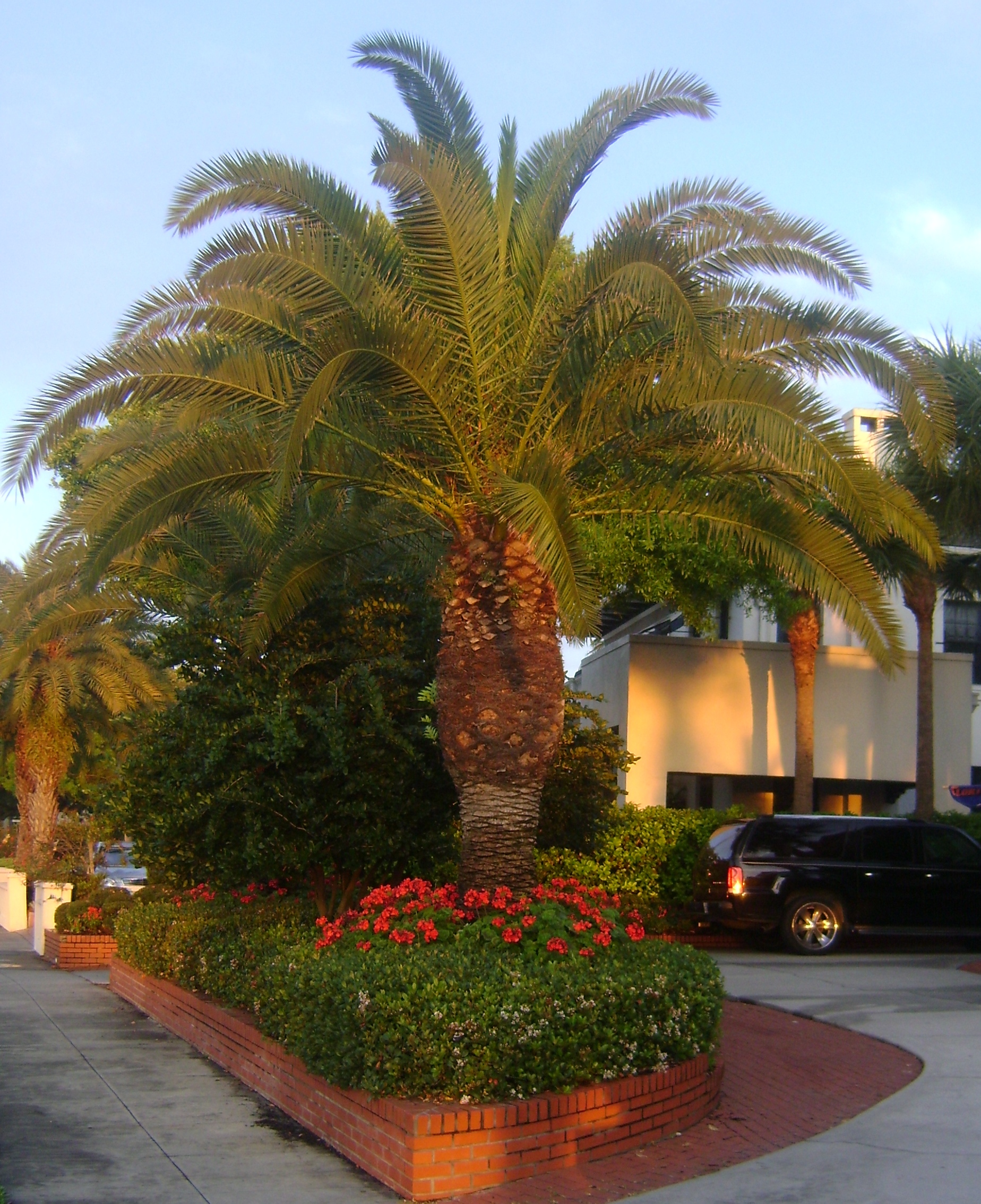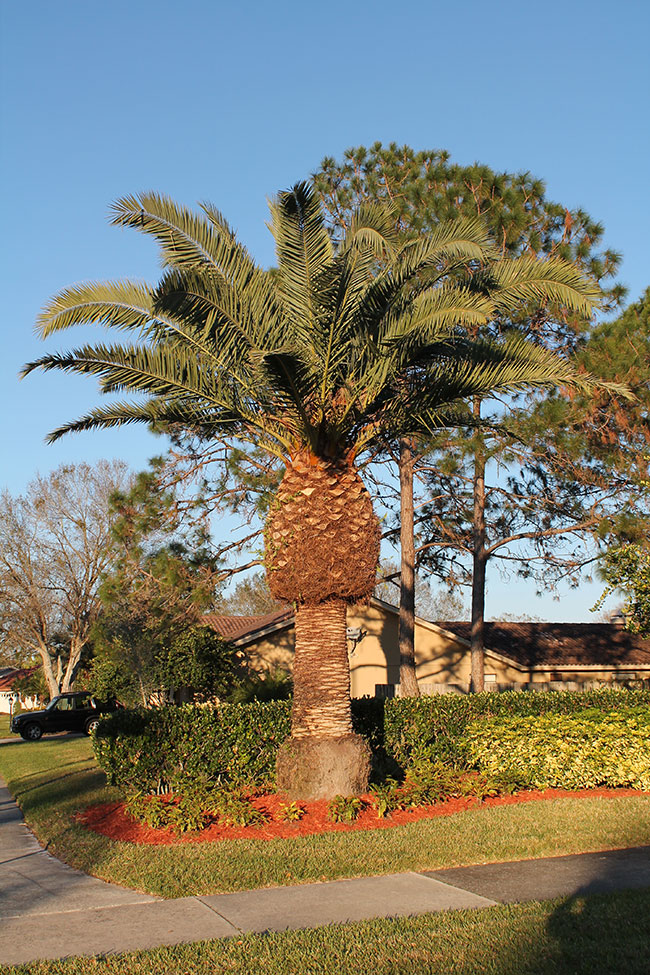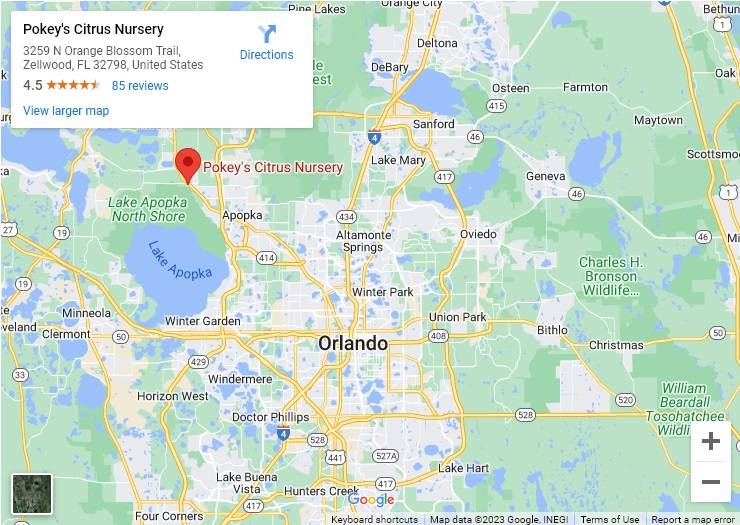A frequent sight along Florida highways and byways, the massive Canary Island date palm creates a striking silhouette wherever it appears.
The Canary Island date palm is a big tree, growing up to 60 feet tall with a thick and sturdy trunk patterned with diamond-shaped leaf scars. The rounded crown is composed of 50 or more arching fronds that can be as much as 18 feet long. Extremely sharp thorns line the bases of the leaf stems.
The flowers of the Canary Island date palm bloom on long inflorescences that are held among the fronds and eventually ripen into decorative clusters of bright yellow dates. The dates are edible but not particularly appetizing to people. Birds love them. In Florida, where rainfall is a plentiful, ferns and other plants may sprout from organic matter trapped in the leaf scars of the Canary Island date palm, creating small hanging gardens.
Like most palms, Canary Island date palms are susceptible to wet feet and prefer well-drained soils clear of turf grasses, mulch and other organic matter. Once established, they are drought tolerant and need watering only during prolonged dry spells. They grow faster and are more colorful when planted in bright, sunny locations.
Fully grown Canary Island date palms are usually not suitable for the home landscape, simply because of their size. Luckily, the Canary Island is a slow-growing date palm. Young individuals can be utilized successfully without worrying that they will shoot up in a year or two. Cultivate them in large containers for use on patios or around swimming pools, or plant a cluster of small date palms in the yard and use landscape lighting to illuminate them at night.



